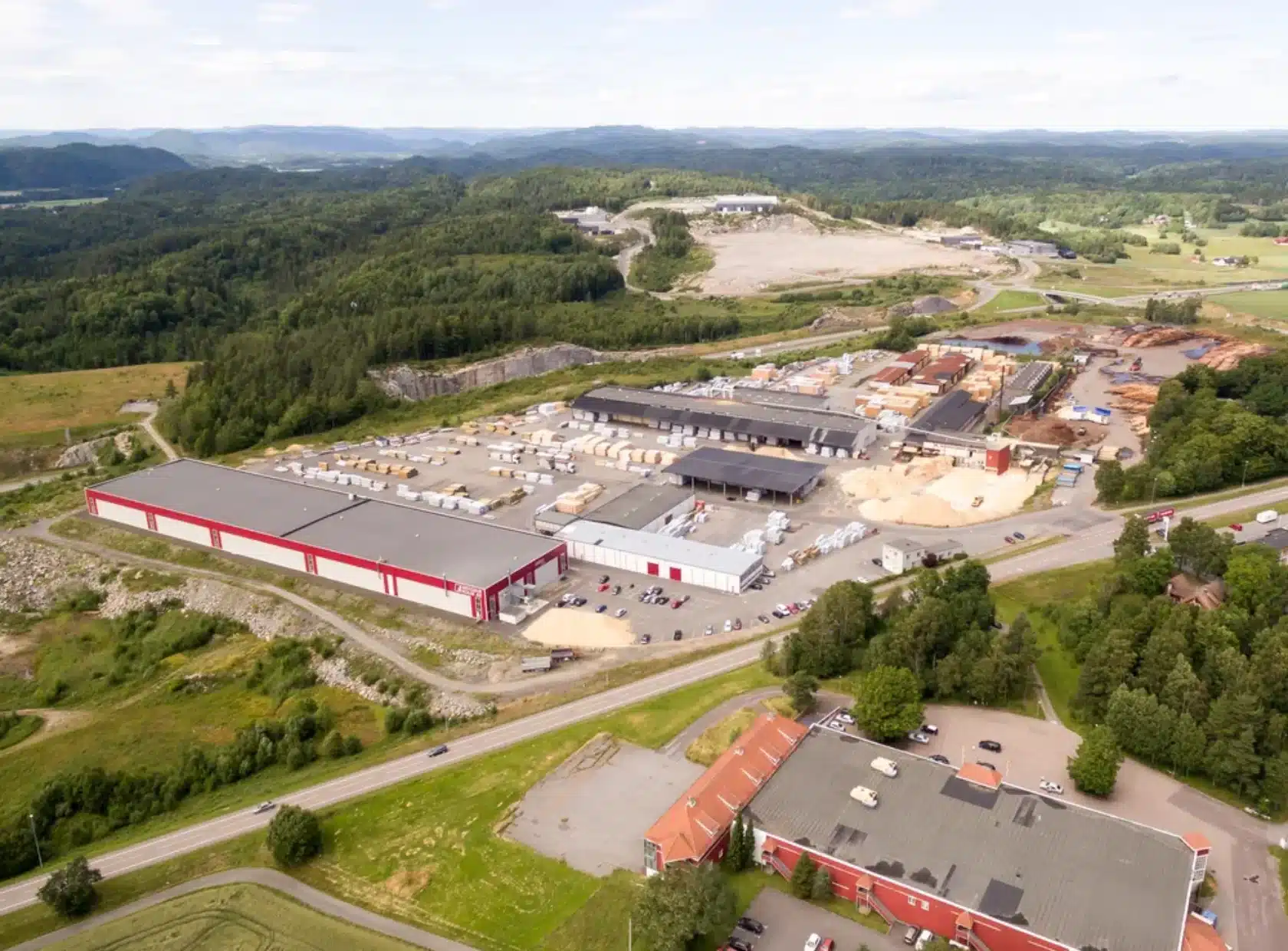
From bottleneck to key component
This is how Bergene Holm works with integrations to digitize the production of timber!
Written by TUM Studio.
A stone’s throw from the E18 outside Larvik, we find the traditional family business Bergene Holm AS. The company, which was established in 1946, has a long history in processing wood. For over 75 years, the business has worked hard to be a leading total supplier of lumber to the Norwegian construction trade and industrial customers at home and abroad. The company has always been close to technological developments, but in recent years the company’s work with digitization has really accelerated. Last year, the company decided to implement an integration platform to support the digitization work.
Integrations – An important piece for effective digitalisation
– It is a clear trend that we are getting more and more digital solutions. An increasing proportion of these solutions require integration with existing systems. With more integrations, the need for ownership and control increases, as well as the processes that make it possible to implement new integrations in a cost-effective and scalable way, explains Christoffer Wibe Due, who has been responsible for the implementation of the company’s integration platform.

The choice of platform landed on “Azure Integration Services” from Microsoft. The solution is a collection of cloud-based services that provide the ability to build, manage and monitor integrations. These services make it possible to integrate and automate business processes across systems and applications. The company already had experience with Azure, and it was desirable to choose a solid solution where access to expertise and resources was good. The company chose Addovation as a partner for the integration work.
– Addovation has been an important partner right from the start of the project. We got an incredibly skilled team from Sweden who had a good knowledge of the platform we wanted and were forward-leaning in their approach to what a modern integration platform should entail, says Christoffer.
The importance of internal ownership and competence
A central principle for the entire project was that ownership of own integrations should be strengthened and internal knowledge increased. Integrating systems is a complex task that requires close collaboration between different teams and departments, and it is important to have a thorough understanding of both the business processes and the technology involved. Bergene Holm sees great value in having this expertise within the company.
– That knowledge transfer was so central to Bergene Holm I think surprised the team from Addovation. There are probably many companies that take a more “hands-off approach” and do not follow up projects as closely. I believe that having an engaged customer who wants to understand what you do and why you make the choices you make is only positive.
Christoffer points out that this mindset is not about copying the work of partners, but about extracting the most value possible from the projects you have decided to carry out.
– I think many people forget how much business logic is actually included in both integrations and work with ERP systems. If we do not take proper responsibility for these solutions internally, we risk meeting ourselves at the door. What we are trying to achieve is a future where integrations are a door-opener for new innovations and efficiencies, rather than a bottleneck and show-stopper every time we have to do something new. That journey starts with taking clear ownership and having employees with the knowledge to develop and manage our integrations in a good way.
Good preparatory work saved time
In advance of the implementation, a preliminary project was carried out in collaboration with Addovation. During a 6-week period, an integration strategy was created which set the direction for further development. Central to this strategy were concrete guidelines, principles and priorities for how Bergene Holm should work with integrations going forward.
– The work on the integration strategy has undoubtedly paid off and simplified our work over the past year. There have been many episodes where the principles and priorities have guided the choices we have made, confirms Christoffer.
The new way of working with integrations stands in stark contrast to how you have worked in the past.
– Historically, all integrations have been made as point-to-point integrations with the tool that was most convenient for the partner, or consultant, who was involved. For Bergene Holm, this has often been the migration modules in the ERP system, IFS. Such an approach worked well when most of the data exchange went towards IFS, but with today’s system landscape and ever more integrations, this way of thinking had become a limiting factor.
The company still has old integrations in IFS, but confirms that all new integrations must go through the platform in Azure. The transition to an integration platform has also had effects in terms of access to resources and expertise. In a market where the recruitment of technical IT competence can be challenging, it helps to have modern solutions for technologies that are widespread.
– It is easier to find people who have generic integration skills such as C# programming and Azure components, than someone who knows the integration modules on old IFS variants. It is also more rational and cost-effective to use the systems’ standardized interfaces for data exchange and put integration logic and transformations of data in an intermediate layer that we ourselves can manage in a good way, says Christoffer.
Key tool in the company’s largest digitization project
The company’s integration platform has been used extensively in the past year. The solution has been particularly useful in the company’s largest digitization project, “Rett Lager”. The project involved, among other things, the implementation of a new warehouse management system for the logistics of timber packages.
The new system is about replacing manual routines and paper slips with a PC in the truck where all the necessary information is available in real time. It gives better control and less searching. However, the interaction between the new warehouse management system and the ERP system has led to many new integrations.

– We get the best user experience if our truck drivers and logistics planners have the same understanding of reality. This means that all stock movements must be reflected in both the stock management and ERP systems at the same time. In addition, we have seen great value in making surrounding information available directly to the truck drivers. By working directly against our purchase orders, production orders and deliveries in the ERP system through a user-friendly interface adapted to the truck, we simplify the work processes. This increases precision and we achieve better control over the flow of goods.
According to Christoffer Wibe Due, the project with the implementation of a new warehouse system has been ongoing for a year and is now in its final phase.
– Through the Rett Lager project, the integration platform has really demonstrated its value. The flexibility and speed of development it provides, as well as the possibilities for good monitoring and troubleshooting, have been absolutely essential.
Good collaboration with Addovation
Christoffer praises the collaboration partner and how they contributed to a smooth rollout:
– I feel that Addovation met us with great understanding of the problems we faced. We were also very satisfied with the flexibility that was given to us along the way. The work with integrations has been characterized by periods of both high and low workload, depending on the progress of the various projects. Having long-term continuity in the team, as well as scaling the hours used up and down based on needs, was incredibly important both for the quality of the deliveries and the use of costs.
The solution architect concludes: – The implementation of the integration platform has been an important piece in the work with digitalisation. It has given us the control we wanted, and at the same time opened up a number of new possibilities. Taking greater ownership of integrations, having expertise internally, and finding a good partner and supplier has been very important to us. On this journey, Addovation has given us great help, both in getting started, but also as a partner for execution and implementation.
Thank you to Bergene Holm and to Christoffer Wibe Due for sharing their experience. Are you looking for someone to help you with your integrations? Contact us!
